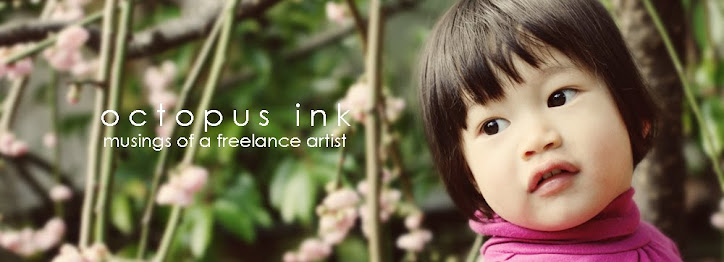 I saw an ad for a comic art teacher on Craiglist gigs, and it piqued my interest. My comic heyday was 4-5 years ago, and it ended abruptly after my MFA when I realized one can't do much in the real world with comics... it's a rare occurrence that one can live off comic art.
I saw an ad for a comic art teacher on Craiglist gigs, and it piqued my interest. My comic heyday was 4-5 years ago, and it ended abruptly after my MFA when I realized one can't do much in the real world with comics... it's a rare occurrence that one can live off comic art.The more I learned about the comic art teacher position, the more I realized I was not the right candidate. The curriculum was a series of "How To Draw X and Y", X and Y being pirates, imaginary animals, caricatures, action figures, heroes, manga characters (Sailor Moon?!). To me, comics are not about How To Draw, but rather: How To Tell A Story. Elements would include: How to indicate time passage (a clock on the wall in the background? A sprouting, then blooming, then wilting plant? The pattern of shade through a window?), Composition (why show a character close up vs from a distance?), Point of View (who is telling the story? narrator? First person? Third?) Perhaps my perspective is Art-Schooly. I do think most people think of comics as (a) for kids (b) featuring bug eyed cartoon (non-bug) characters or super hero characters (c) 3-panel newspaper strips.
I admit, pre-art school, I had similar comics prejudices, until I took a comics class with Phoebe Gloeckner (she grew up with R. Crumb hanging around her home), who would eventually become one of my MFA advisors. The first thing she told us was: Forget everything you think you know about comics. The only traditional aspect of her class was the materials we used: pen or brush and black ink on bristol - and this is for comic reproducing purposes. Otherwise, we realized, I can draw in any style! My panels can be any size! Panels don't even have to exist! It doesn't have to be funny! It can be drawn for adults! Main characters can be normal people! Suddenly the world of comics opened wide, shoving aside all thoughts of manga, disney, garfield, archie, superheroes, farside, calvin and hobbes, peanuts etc etc....
I was introduced to the world of Indie Comics. Different from Industry Comics (DC/Marvel) and from Syndicated Comics (newpaper strips e.g. Peanuts). Indie comics might be like indie music. It starts off with artists not really caring what mainstream is up to, and will do art their own way. Funding is non-existent, comics is a 2nd job, artists do their own publishing. But, like indie music, indie comic can become popular. Some great indie comic faves of mine you'll now find in bookstores:
Jimmy Corrigan: The Smartest Kid On Earth by Chris Ware
Maus I and II by Art Spiegelman
Sleepwalk by Adrian Tomine
(by the way, all of the above are rather... not upbeat stories)
And my favorite Manga: The Buddah series, by Osamu Tezuka.
My MFA comic was autobiographical, the first book featuring ant-headed people, the second people-headed people. It dealt with issues of cultural identity, and indirectly addresses the portrayal of Asian Americans and Women in comics. At my first job post MFA, I gave a co-worker a copy of my MFA comic. He said "Thanks so much! My son will love it!"
Maybe a more fitting comics teaching job will find me one day... or should I get off my pedestal of comic ideals? But a "How To" class? That means that kids would try to draw characters in one certain way that I teach them; it does not encourage individual style.
Anyways. I've gone on long enough, and must do some photo editing.

No comments:
Post a Comment